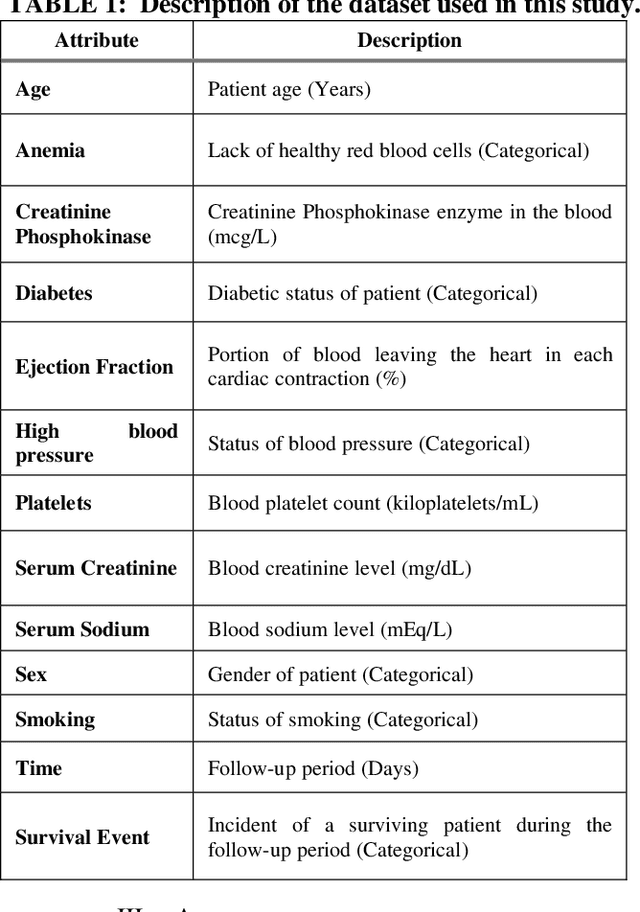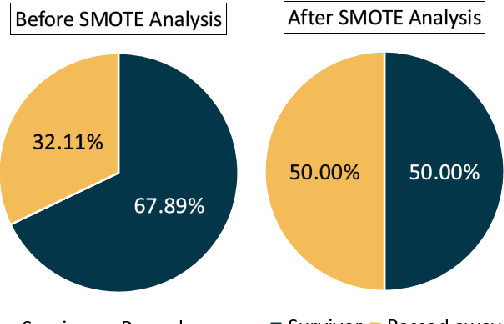Ocean Monjur
Exploring Synergistic Ensemble Learning: Uniting CNNs, MLP-Mixers, and Vision Transformers to Enhance Image Classification
Apr 12, 2025Abstract:In recent years, Convolutional Neural Networks (CNNs), MLP-mixers, and Vision Transformers have risen to prominence as leading neural architectures in image classification. Prior research has underscored the distinct advantages of each architecture, and there is growing evidence that combining modules from different architectures can boost performance. In this study, we build upon and improve previous work exploring the complementarity between different architectures. Instead of heuristically merging modules from various architectures through trial and error, we preserve the integrity of each architecture and combine them using ensemble techniques. By maintaining the distinctiveness of each architecture, we aim to explore their inherent complementarity more deeply and with implicit isolation. This approach provides a more systematic understanding of their individual strengths. In addition to uncovering insights into architectural complementarity, we showcase the effectiveness of even basic ensemble methods that combine models from diverse architectures. These methods outperform ensembles comprised of similar architectures. Our straightforward ensemble framework serves as a foundational strategy for blending complementary architectures, offering a solid starting point for further investigations into the unique strengths and synergies among different architectures and their ensembles in image classification. A direct outcome of this work is the creation of an ensemble of classification networks that surpasses the accuracy of the previous state-of-the-art single classification network on ImageNet, setting a new benchmark, all while requiring less overall latency.
Deep learning-based hyperspectral image reconstruction for quality assessment of agro-product
May 20, 2024Abstract:Hyperspectral imaging (HSI) has recently emerged as a promising tool for many agricultural applications; however, the technology cannot be directly used in a real-time system due to the extensive time needed to process large volumes of data. Consequently, the development of a simple, compact, and cost-effective imaging system is not possible with the current HSI systems. Therefore, the overall goal of this study was to reconstruct hyperspectral images from RGB images through deep learning for agricultural applications. Specifically, this study used Hyperspectral Convolutional Neural Network - Dense (HSCNN-D) to reconstruct hyperspectral images from RGB images for predicting soluble solid content (SSC) in sweet potatoes. The algorithm accurately reconstructed the hyperspectral images from RGB images, with the resulting spectra closely matching the ground-truth. The partial least squares regression (PLSR) model based on reconstructed spectra outperformed the model using the full spectral range, demonstrating its potential for SSC prediction in sweet potatoes. These findings highlight the potential of deep learning-based hyperspectral image reconstruction as a low-cost, efficient tool for various agricultural uses.
Telehealthcare and Covid-19: A Noninvasive & Low Cost Invasive, Scalable and Multimodal Real-Time Smartphone Application for Early Diagnosis of SARS-CoV-2 Infection
Sep 16, 2021



Abstract:The global coronavirus pandemic overwhelmed many health care systems, enforcing lockdown and encouraged work from home to control the spread of the virus and prevent overrunning of hospitalized patients. This prompted a sharp widespread use of telehealth to provide low-risk care for patients. Nevertheless, a continuous mutation into new variants and widespread unavailability of test kits, especially in developing countries, possess the challenge to control future potential waves of infection. In this paper, we propose a novel Smartphone application-based platform for early diagnosis of possible Covid-19 infected patients. The application provides three modes of diagnosis from possible symptoms, cough sound, and specific blood biomarkers. When a user chooses a particular setting and provides the necessary information, it sends the data to a trained machine learning (ML) model deployed in a remote server using the internet. The ML algorithm then predicts the possibility of contracting Covid-19 and sends the feedback to the user. The entire procedure takes place in real-time. Our machine learning models can identify Covid-19 patients with an accuracy of 100%, 95.65%, and 77.59% from blood parameters, cough sound, and symptoms respectively. Moreover, the ML sensitivity for blood and sound is 100%, which indicates correct identification of Covid positive patients. This is significant in limiting the spread of the virus. The multimodality offers multiplex diagnostic methods to better classify possible infectees and together with the instantaneous nature of our technique, demonstrates the power of telehealthcare as an easy and widespread low-cost scalable diagnostic solution for future pandemics.
Survival Prediction of Heart Failure Patients using Stacked Ensemble Machine Learning Algorithm
Aug 30, 2021



Abstract:Cardiovascular disease, especially heart failure is one of the major health hazard issues of our time and is a leading cause of death worldwide. Advancement in data mining techniques using machine learning (ML) models is paving promising prediction approaches. Data mining is the process of converting massive volumes of raw data created by the healthcare institutions into meaningful information that can aid in making predictions and crucial decisions. Collecting various follow-up data from patients who have had heart failures, analyzing those data, and utilizing several ML models to predict the survival possibility of cardiovascular patients is the key aim of this study. Due to the imbalance of the classes in the dataset, Synthetic Minority Oversampling Technique (SMOTE) has been implemented. Two unsupervised models (K-Means and Fuzzy C-Means clustering) and three supervised classifiers (Random Forest, XGBoost and Decision Tree) have been used in our study. After thorough investigation, our results demonstrate a superior performance of the supervised ML algorithms over unsupervised models. Moreover, we designed and propose a supervised stacked ensemble learning model that can achieve an accuracy, precision, recall and F1 score of 99.98%. Our study shows that only certain attributes collected from the patients are imperative to successfully predict the surviving possibility post heart failure, using supervised ML algorithms.
 Add to Chrome
Add to Chrome Add to Firefox
Add to Firefox Add to Edge
Add to Edge